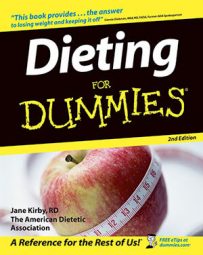Eating out frequently, especially in fast-food restaurants, means that you’re probably missing out on many nutrients and eating more fat and calories than you want or need. A diet of fast food has several problems.
Particularly when it comes to fast-food chains, people tend to eat in response to outside cues, such as advertising, bargain prices, convenience, and speed — rarely for health or pleasure.
Although low-calorie choices are available, most people don’t order them. A typical fast-food meal averages 700 to 1,200 calories. Part of the blame rests on the fact that portion sizes are out of control. Super-sizing an order of fries or a soda may cost only a few cents more and seem like a bargain, but it comes at a big caloric price. A super-size order of fries has a whopping 540 calories and 26 grams of fat; in comparison, a small order has 210 calories and 10 grams of fat. A large 32-ounce cola has 310 calories, but a small cola has 150 calories.
Whether you eat in the restaurant or in your car, you’re probably eating quickly — much too quickly. A good way to moderate how much you eat is to relax, eat slowly, and focus on your meal. People dining in restaurants at booths and benches that offer only about ten minutes of comfort — or worse yet, eat while driving — aren’t focusing on enjoyable eating. They’re wolfing down their meals, so they can head off on their next errand or rush back to work. It takes about 20 minutes for the body to register that it has received food; so often they’re back at their desk long before they feel how much they ate.
Eating fast food more than twice a week increases your chances of becoming obese by 50 percent, because you eat fewer fresh fruits, vegetables, whole grains, and fiber. That’s what researcher Mark Pereira, PhD of the Harvard Medical School told attendees at the American Heart Association’s 43rd annual meeting in March 2003. He examined the diets of almost 4,000 people for 15 years to draw his conclusions. It makes sense.

